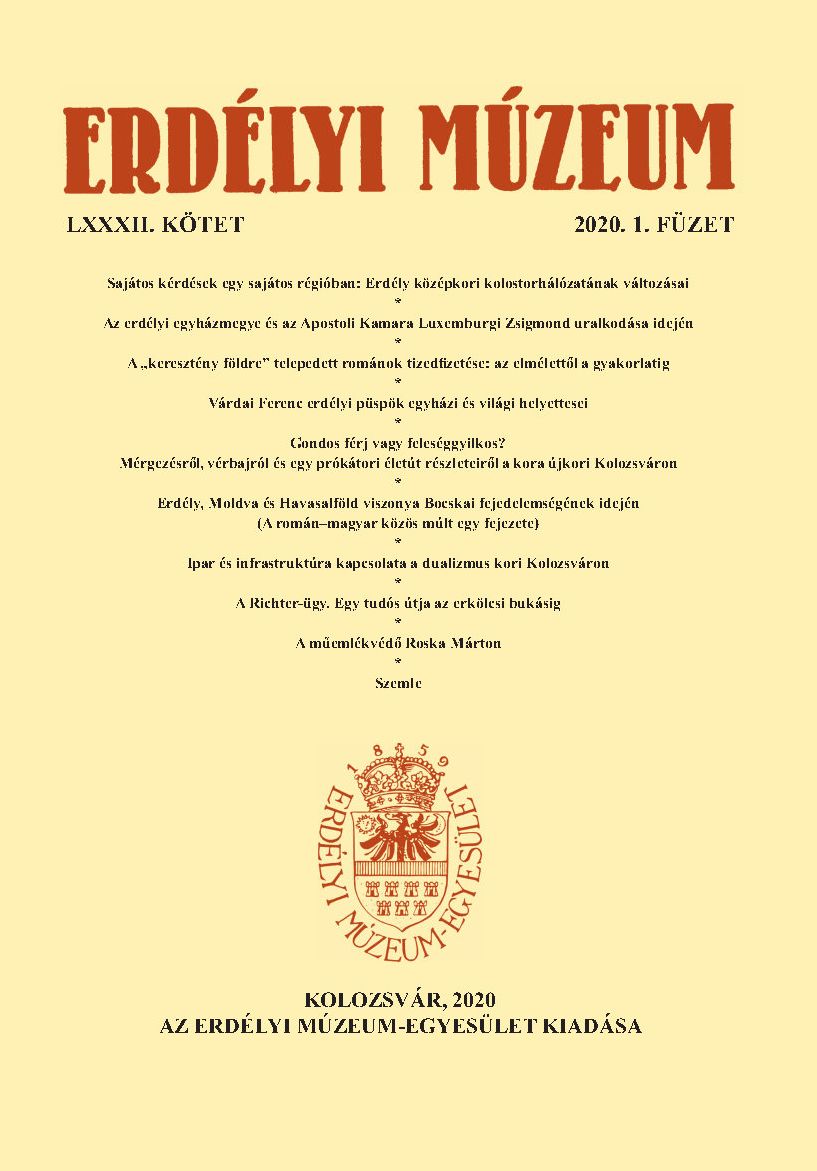Sajátos kérdések egy sajátos régióban
Special Questions in a Special Region
Changes of the Monastic Network in Transylvania
Author(s): Beatrix F. RomhányiSubject(s): Cultural history, 13th to 14th Centuries, 15th Century, History of Religion
Published by: Erdélyi Múzeum-Egyesület
Keywords: Transylvania; monastic network;Middle Ages;
Summary/Abstract: The Transylvanian monastic network developed slower than in the rest of the country, especially in Transdanubia, indicating the limitations of the area’s sustaining capacity. Despite its geographical proximity, the Eastern monasticism was not present in the region during the Árpád era. Of the twelfth-century reform orders, only the Cistercians were able to settle permanently. Despite the repeated attempts, the Premonstratensians failed, while the Austin canons apparently did not even try to settle in the region. The special position of Transylvania within the kingdom is reflected in the fact that mendicant orders arrived there a little slower than in other parts of the country (except the Great Hungarian Plain), but as early as about 1300 the number of the friaries exceeded that of monasteries, the latter being in decline. In terms of sustaining capacity and the proportion of urban friaries, the region is similar to areas in Western and Northern Europe where mining and trade had a significant economic weight. In addition, the network of monasteries clearly shows the lower proportion of both the lesser nobility and the large landowners, which is particularly evident in the absence of kindred monasteries and the small number of Pauline monasteries. In the fifteenth century, the expansion of the monastic network was not only due to internal causes but also to political interests of the royal power, and therefore the economic difficulties felt in other respects were not directly reflected in the development of the monastery network. A striking phenomenon unique to the country is the late medieval surge in the number of female communities. In terms of the spread of the Beguine communities, the phenomenon parallels Slavonia within the country, suggesting that, in addition to local traditions, this may be considered a consequence of the Ottoman wars. One of the peculiarities of Transylvania is that in the sixteenth century the Eastern monasticism almost disappeared from the area, as did the monasteries of the Catholic Church, due to the temporary effect of the Reformation. All in all, in the light of the network of monasteries, medieval Transylvania offers an image of a dynamically changing region that needed some external support but was self-operative, with a character that was closer to the western half of the country than its immediate neighbours.
Journal: Erdélyi Múzeum
- Issue Year: LXXXII/2020
- Issue No: 1
- Page Range: 1-14
- Page Count: 14
- Language: Hungarian

